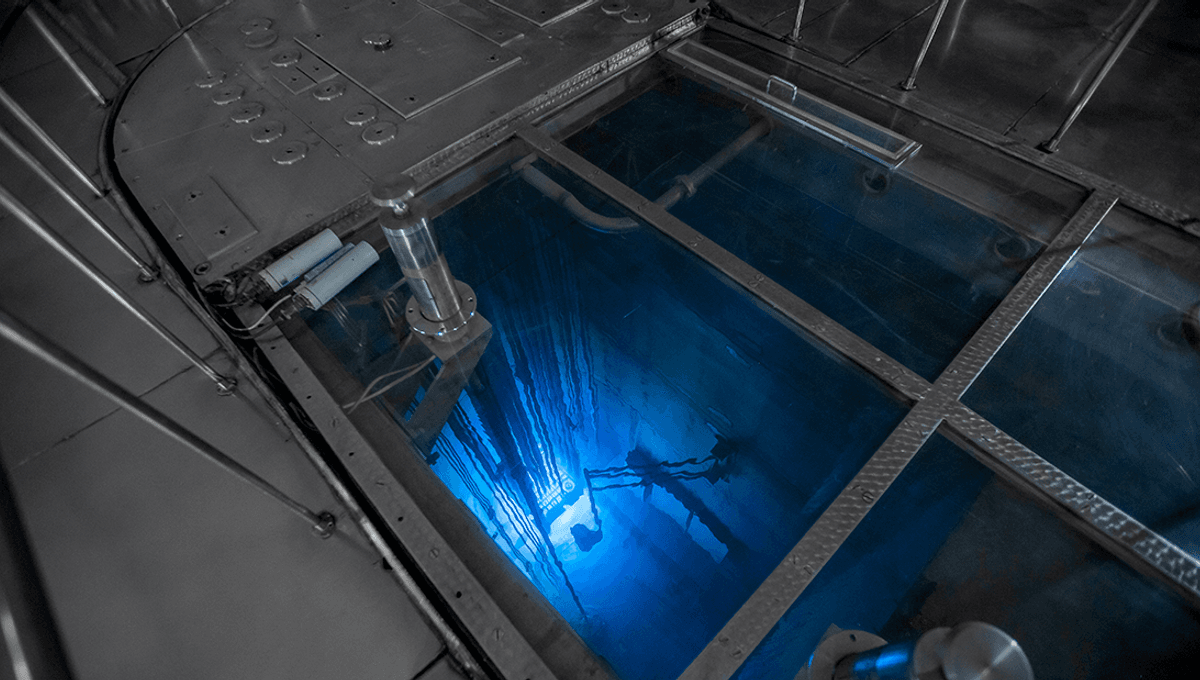
The speed of light in a vacuum is the absolute speed limit of the universe. Nothing will go faster than 300,000 kilometers per second (186,000 miles per second), according to Einstein’s work, as it would require an infinite amount of energy to do so.
However, that doesn’t mean that light can’t be beaten in terms of speed under the right set of circumstances, and when that happens something strange called the “Cherenkov effect” can take place. In water, for example, light is slowed down to a sluggish 200,000 kilometers per second (124,274 miles per second). Ok, we will grudgingly admit that that’s still pretty fast, and any particle wishing to break that speed would require 175 kiloelectron volts of energy behind it.
This does sometimes happen. In 1934, Soviet physicist Pavel Cherenkov witnessed what happens when it does, after bombarding water with radiation. A blue light, now known as Cherenkov light or Cherenkov radiation, was emitted from the water.
He and colleagues Il´ja Mikhailovich Frank and Igor Yevgenyevich Tamm figured out what was causing the strange glow: charged subatomic particles moving faster than the speed of light (in water) producing an effect similar to a sonic boom, which occurs when (for example) a plane travels faster than the speed of sound. For their work, they were awarded the 1958 Nobel Prize in Physics.
Now, another cool thing about Cherenkov radiation is that it can sometimes occur in your head. For decades, people undergoing radiotherapy for cancer have reported seeing flashes of blue light in their eyes, even when their eyes were closed.
In 2020, researchers used technology called a CDose camera imaging system, specially designed to view light emissions from biological systems, to capture an image of the light.
This helped prove that the reports were genuine, and provided evidence that the light was indeed Cherenkov light, a subject of some debate.
“As the radiation beam passes through the eye, light is generated within the vitreous fluid. Our real-time data rigorously showed that the amount of light produced is sufficient to elicit a visual sensation – a topic that has been debated in the literature,” first author Irwin Tendler explained in a statement at the time. “By analyzing the spectral composition, we also show that this emission can be classified as Cherenkov light.”
Source Link: The Cherenkov Effect: What Happens When Particles Move Faster Than Light?